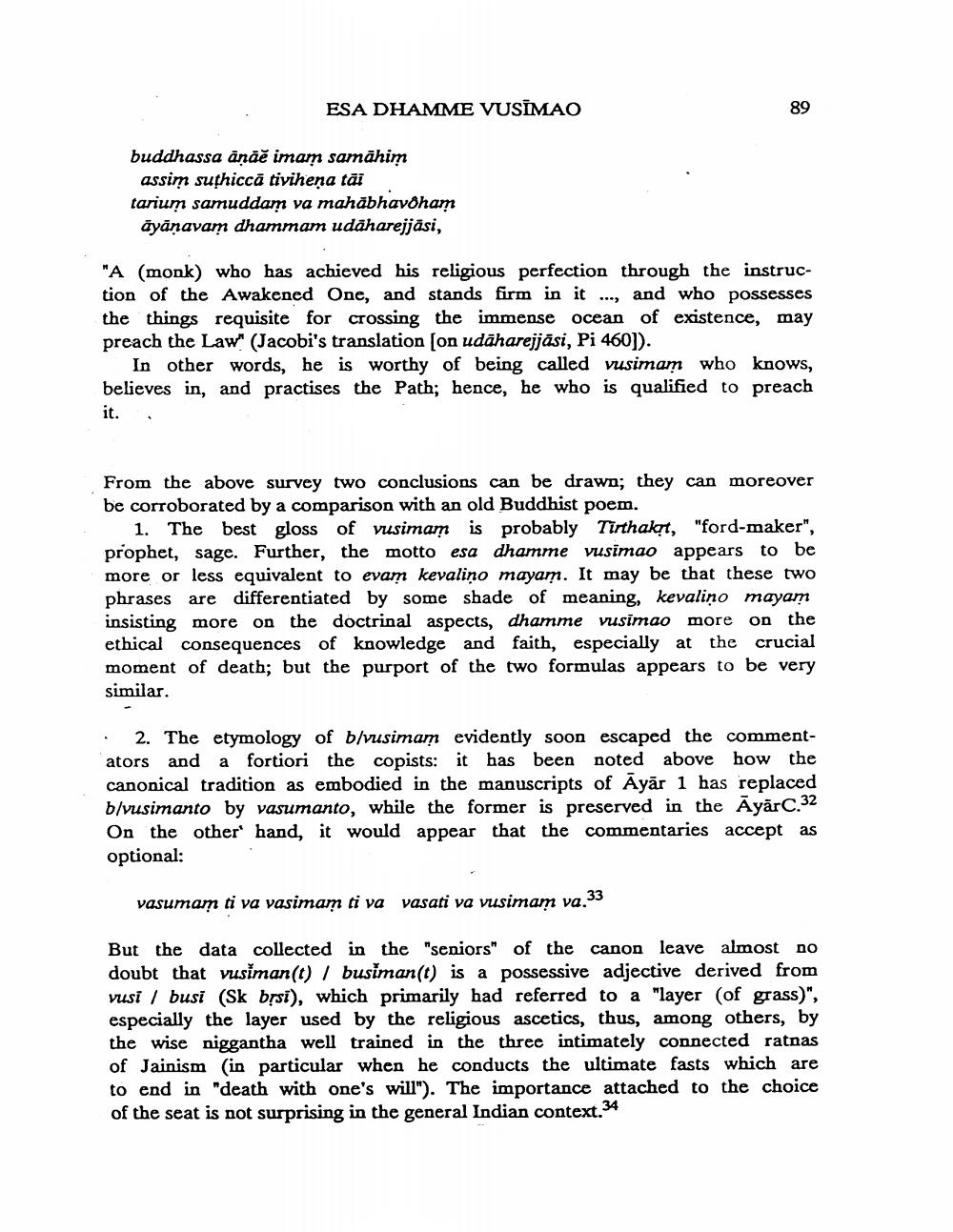________________
ESA DHAMME VUSIMAO
89
buddhassa anāě imam samāhim
assim sufhiccā tivihena tai tarium samuddam va mahābhavoham āyānavam dhammam udaharejjäsi,
"A (monk) who has achieved his religious perfection through the instruction of the Awakened One, and stands firm in it ..., and who possesses the things requisite for crossing the immense ocean of existence, may preach the Law (Jacobi's translation (on udāharejjāsi, Pi 460]).
In other words, he is worthy of being called vusimam who knows, believes in, and practises the Path; hence, he who is qualified to preach it.
From the above survey two conclusions can be drawn; they can moreover be corroborated by a comparison with an old Buddhist poem.
1. The best gloss of vusimam is probably Tirthakyt, "ford-maker", prophet, sage. Further, the motto esa dhamme vusimao appears to be more or less equivalent to evam kevaliņo mayam. It may be that these two phrases are differentiated by some shade of meaning, kevaliņo mayam insisting more on the doctrinal aspects, dhamme vusimao more on the ethical consequences of knowledge and faith, especially at the crucial moment of death; but the purport of the two formulas appears to be very similar.
• 2. The etymology of b/vusimam evidently soon escaped the commentators and a fortiori the copists: it has been noted above how the canonical tradition as embodied in the manuscripts of Āyār 1 has replaced b/vusimanto by vasumanto, while the former is preserved in the ĀyārC.32 On the other hand, it would appear that the commentaries accept as optional:
vasumam ti va vasimam ti va vasati va vusimam va.33
But the data collected in the "seniors" of the canon leave almost no doubt that vusiman(t) / busiman(t) is a possessive adjective derived from vusi / busi (Sk brsi), which primarily had referred to a "layer (of grass)", especially the layer used by the religious ascetics, thus, among others, by the wise niggantha well trained in the three intimately connected ratnas of Jainism (in particular when he conducts the ultimate fasts which are to end in "death with one's will"). The importance attached to the choice of the seat is not surprising in the general Indian context.34




